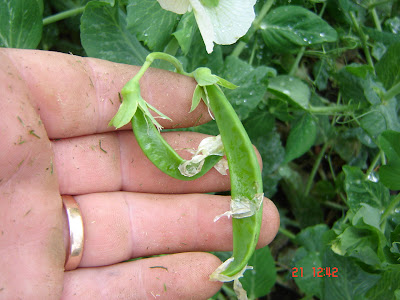Sulphate of ironThis improves the habitat of ericaceous plants such as Blueberries by lowering the soils pH, making it more acidic. It also supplies Iron, which is a mojor plant element. For a base dressing before sowing or planting add 3oz per square yard and work into the soil. To top dress established plants, add 1oz per square yard and lightly hoe in.
Sulphate of AmoniaThis is a quick acting general nitrogen fertiliser for use throughout the garden. It is mainly used to give a rapid boost to established, quick growing vegetables and salad crops. It gives a very effective spring tonic to shrubs, fruit and spring greens. To top dress add 1oz per square yard and hoe in or for use as a liquid feed add 1oz to 2 gallons of water and water in, keeping the fertilizer off leaves and stems.
Blood, Fish and BoneThis has an NPK ratio of 6-7-6, and is an organically based and balanced compound fertiliser. It can be used on shrubs, flowers and vegetables and should be used from early spring through to October. Before planting work 4oz per square yard into the soil. as a top dressing to established plants, apply 2oz per square yard at 6-8 week intervals. Keep the fertiliser off leaves and stems.
BonemealThis is a slow release fertiliser for all round use. It can be used all year but especially during the autumn, winter and spring. It is especially good as a pre planting fertiliser for roses, shrubs and trees. Vegetables also benefit from the high phosphate content, especially onions, peas and root crops. As a base dressing prior to planting and sowing work 4oz per square yard into the soil. When planting roses, trees and shrubs, mix it into the soil from the planting hole prior to backfilling.
Sulphate of PotashThis is a quick release fertiliser for use from March to August. It improves the colour of vegetables and flowers and promotes blooming in flowers and fruit blossom. For a base dressing before sowing or planting add 4oz per square yard and work into the soil. To top dress established plants, add 2oz per square yard and lightly hoe in.
GrowmoreThis has an NPK of 7-7-7 and is a traditional, balanced fertiliser. Its granular form makes it easy and clean to apply. For a base dressing before sowing or planting add 3oz per square yard and work into the soil. To top dress established plants, add 1oz per square yard and lightly hoe in. For potato crops apply at 6oz per square yard prior to planting.
SuperphosphateThis encourages strong roots on seedlings, rooted cuttings and transplant. It also encourages the early maturity of fruit. It can be used all year round but is best used as a base dressing before sowing or planting at 2oz per square yard and work into the soil. As a top dressing to established plants, add 2oz per square yard and lightly hoe in. Keep off the leaves.
Garden LimeThis can be used at anytime but it is best to dress the soil in autumn and spring. Lime "sweetens" sour, acid soils, helps to raise the soil pH which helps to release nutrients to plants, improves the soils condition and helps to obtain a better tilth and drainage. It can be use on most plants
except:- blueberries, azaleas, heathers, primulas, lupins and rhododendrons.
Apply at the following rate:-
Light or sandy soil 8oz per square yard
Medium or silty soil 12oz "
Heavy or clay soil 16oz "
As a wise precaution, keep all garden fertilisers or chemicals, stored in the well labelled boxes (preferably their original one) or containers and in a safe and secure place well away from children or others.









































